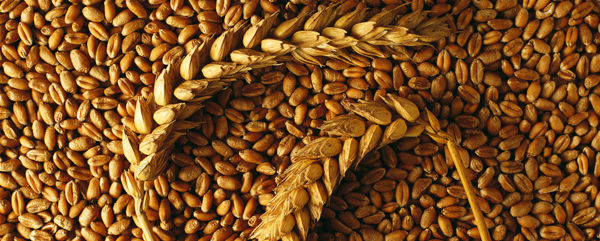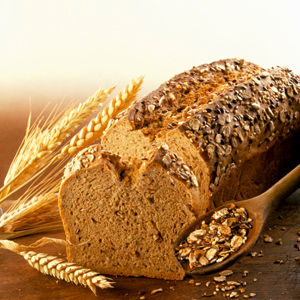Wheat and Flour Quality: Part 1
July 13, 2017
By: Edward Usset, University of Minnesota, Grain Marketing Economist

Wheat quality. Milling quality. Flour and baking quality. Three different ways of assessing the same grain. It seems like it should not be that complicated, but it is. The complications stem from the role of wheat as a food grain, and the many wonderful products created from wheat and flour.
In this two-part blog post, I am going to try to make sense of a topic that creates frustration for many wheat producers. In Part I, I want to discuss wheat and its role as a food grain, and explore the wide variety of food products created from this one grain. In Part II, I will get specific with different measures of wheat and flour quality, and explore the disconnect between quality as perceived by the wheat producer, and quality as perceived by the baker, or flour user. We can even look between the producer and baker – at the flour miller – whose view of quality is also important.
I want you to consider two different products. One product is the bagel. I love bagels; the dense chewy texture of a fresh bagel makes for a great sandwich at lunch. Then again, peanut butter and jam on a toasted bagel makes for a quick and simple breakfast. The other product is a cake. What is a birthday or wedding without the light, almost foamy, texture of a freshly baked cake? In terms of texture and density, the bagel and cake are on opposite ends of the spectrum. This, despite the fact that the main ingredient in both products – wheat flour – is the same.
Wheat flour is the primary ingredient in an incredibly wide array of products. Between the bagel and cake, we can name a lot of products that make up a large part of our daily diet. Let’s start with pizza crusts, ethnic breads, whole grain breads and white breads (and bagels). To this list we can add hard and soft rolls, croissants, hamburger and hot-dog buns, tortillas, and pretzels. We can satisfy our sweet tooth with pastries, muffins, pie crusts and cookies (and cake). And we would be remiss if we omitted pasta and noodles, products made from durum wheat.

The bottom line is that wheat is a food grain, used to create a long list of products consumed by people. In contrast, consider corn, generally classified as a feed grain and consumed by animals. Corn may be king, but the list of major products made from corn is short; feed, fuel and corn sweeteners. Soybeans are an oilseed used to make just two primary products; meal and oil. Corn is corn, but wheat buyers have six different classes of wheat to choose from – durum, hard red winter, hard red spring, soft red winter, soft white and hard white. How many major livestock feed classes of corn and soybeans exist? The answer is one of each. I recently had an interesting conversation with a grain trader, and we were contrasting the challenges in merchandising wheat versus corn and soybeans. Wheat, we agreed, presented a much greater challenge because of the higher standards placed on wheat as a food grain (and I couldn’t help but laugh when he referred to merchandising corn and soybeans as “trading gravel”).
So what is the greatest “quality” challenge currently faced by the wheat and milling industries? Three words summarize the industry’s most pressing wheat quality issues; vomitoxin and falling numbers.
Vomitoxin (aka deoxynivalenol, or DON) is a mycotoxin that may be produced in wheat infected by scab (aka fusarium head blight). Wheat flour has strict rules around vomitoxin to protect consumers. Food products are restricted to a 1 part per million – a level deemed safe for human consumption by the FDA.
Vomitoxin is not an issue of food quality - it is an issue of even greater importance; food safety. The problem affects several wheat classes in different parts of the country. In February, I spoke in northwestern North Dakota. That’s durum country, and what I heard led me to believe that durum wheat, in particular, was hit hard by vomitoxin in 2016.
While vomitoxin is a food safety issue, the falling number is a basic flour quality issue. Sprout damaged wheat leads to a low falling number, which is measured in seconds. A falling number test measures the level of enzyme (α-amylase, to be specific) activity in flour, which is a result of sprout damage in wheat. A low falling number - less than 200 seconds - indicates too much enzyme activity, or too much sugar and too little starch are present. Too little starch is a problem, as starch provides the supporting structure of bread. For bread quality, a low falling number flour results in sticky dough, darker colors, coarser crumb, and a sticky and gummy bread texture. That’s not the bread we want to eat. For pasta and noodles made with low falling number flour, the resulting product is fragile, soft and mushy. That’s not very appetizing for the Italian foodie who likes his pasta “al dente.”
In general, the milling industry is looking for a falling number greater than 300 seconds. According to the USDA Wheat Quality Lab, if the falling number is greater than 300, there is no sprout damage. A measure between 200 and 300 indicates some sprouting. Wheat with modest to poor falling numbers can be blended in small quantities with good wheat to make a good flour.
Vomitoxin and falling numbers are critical wheat quality issues. Thankfully, both problems are easy to measure and quantify. A diligent and alert wheat buyer can manage the issues. With these issues under control, we can move forward to explore the qualities and differences of a good flour for bagels, and a good flour for cakes.
About the Author

Edward Usset serves as a Grain Marketing Economist at the University of Minnesota, where he teaches "Commodity Markets" and travels broadly to discuss marketing plans and strategies with grain producers. He is also a regular columnist for Corn and Soybean Digest. Prior to his work with the University, he served 12 years in the milling division of The Pillsbury Company, where he purchased wheat and sold wheat flour. The 2nd Edition of his book, “Grain Marketing is Simple (it’s just not easy)” was released in November, 2015.